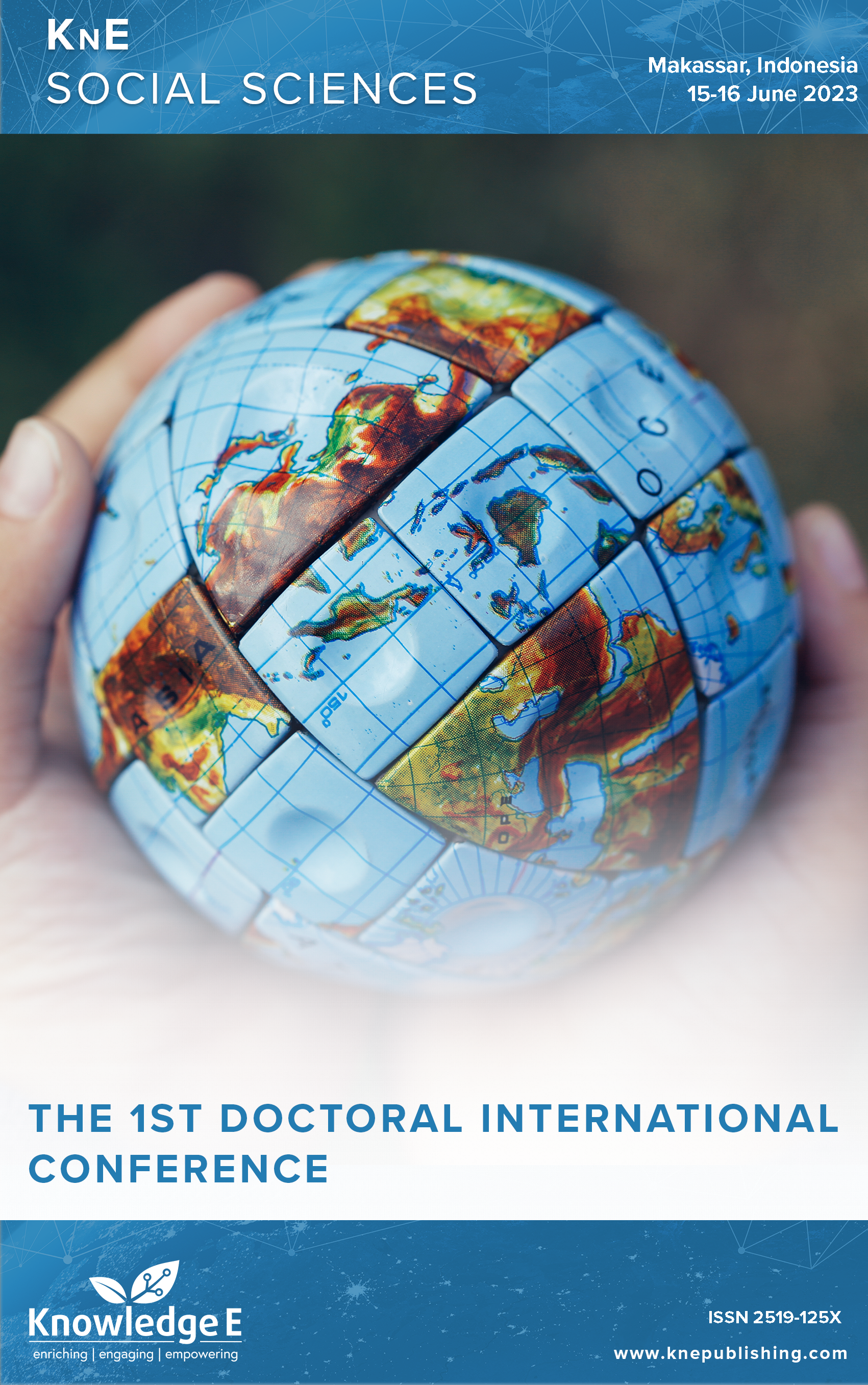Unleashing the Power of Capacity Building: Transforming Governance and Policy Implementation in the Digital Era
DOI:
https://doi.org/10.18502/kss.v8i17.14121Abstract
This study aims to outline the strengths of capacity building and the problems associated with the lack of capacity in the context of governance transformation and policy implementation in the digital era, and initiate an innovative and sustainable capacity-building strategy as a fundamental solution. This study uses a qualitative approach and document analysis to obtain a more detailed analysis. Data was obtained from the National Planning and Development Agency, namely the National Medium-Term Development Plan (RPJMN) 2020-2024. This data included human resource development and infrastructure development in terms of information and communication technology (ICT) related to digital transformation, as well as policies that support digital transformation. The findings of this research illustrate that in terms of the quality of human resources, there are still shortcomings in skills and collaboration between government, universities, and other stakeholders in the industry, and there are still inequalities in access to information in various regions. In addition, there are still obstacles to the implementation of digital transformation in Indonesia in the delivery of public services from the aspects of leadership and political commitment, budget availability, infrastructure readiness, and the digital divide. Thus, strategies are needed to deal with them effectively. It can then be concluded that the dimension of human resource development needs to increase worker skills and knowledge related to digital technology in the public sector. Likewise, the dimension of strengthening organizational capacity that changes in organizational culture are key to dealing with governance transformation in the digital era. In the institutional reform dimension, it is important to evaluate and make changes to the existing institutional structures and processes.
Keywords: capacity building, transformation governance, digital governance
References
[2] Forman C, Zeebroeck V. Digital technology adoption and knowledge flows within firms: Can the internet overcome geographic and technological distance? Research Policy. 2019;48(8):1–16.
[3] Christian A, Steffen H, Christoph K. Intoducing vertical policy coordination to comparative policy analysis. Journal of Comparative Policy Analysis. 2019;:1–19.
[4] Manu P, Mahamadu AM, Booth C, Ibrahim A and Lamond J. Infrastructure procurement capacity gaps in Nigeria public sector institutions. https://doi.org/10.1108/ECAM- 11-2017-0240
[5] Chandra P, Ahmed SL. Privacy vulnerabilities in public digital service centers in Dhaka, Bangladesh. Congreso International de Innovacion y Tendencias En Ingenieria, CONIITI Conference Proceedings. 2020.
[6] Sirait UA, Said LR, Dewi MS. Officials performance in the digital transformation of government: Do we expect too much? Turkish Journal of Computer and Mathematics Education. 2021;12(14):899–917.
[7] Mukherjee I, Coban MK, Bali AS. Policy capacities and effective policy design: A review. Policy Science. 2021;54(2):243–68.
[8] Elmassah S, Mohieldin M. Digital transformation and localizing sustainable development goals (SDGs). Ecological Economic. 2020;169.
[9] Ifenthaler D, Egloffstein M. Development and implementation of a maturity model of digital transformation. TechTrends. 2020;64(2):302–9.
[10] A. Puraite and L. Shmorgun. Algorithmic governance in public sector: Is digitalization to effective management. pp. 2149-2170.
[11] Shin S, Ho J, Pak VY. Digital transformation through e-government innovation in Uzbekistan. 22nd International Conference on Advanced Communication Technology. 2021.
[12] G. Shankaranarayanan. Making a digital innovator: Antarecendents of innovativeness with digital technologies.
[13] Gillson L, Biggs H, Smit IP, Virah-sawmy M, Rogers K. Finding common ground between adaptive management and evidence based approaches to biodiversity conservation. Trends in Ecology & Evolution. 2018;20:1–14.
[14] Heloise AT, Edna DC. Best practices and methodologies to promote the digitalization of public services citizen driven: A systematic literature review. MDPI. 2018;9(8):197.
[15] Kurt B, Geza B. Artificial intelligence and big data in public health. International journal of Environmental Research and Public Health 2018 10;15(12):2796.
[16] Zhang Y, Geng P, Sivaparthipan CB, Anand B. Big data and artificial intelligence based early risk warning systems for fire hazards in smart cities. Sustainable Energy Technologies and Assessments. 2021;45.
[17] Zu X, Diao X, Meng Z. Impact of social media input intensity on firm performance: Evidence from Sina Weibe. 2019;536.
[18] Crystal A, Charity B. Digital civil society: How Nigerian NGOs utilize social media platforms. International Journal of Politics Culture and Society. 2017.
[19] Squires A. US nursing and midwifery research capacity-building opportunities to achieve sustainable development goals for the United Nations. Nursing Outlook. 2020:1–7.
[20] Karam S, Nagahi M, Nick VL. Integrating systems thinking skills with multi criteria decision making. Expert Systems with Applications. https://doi.org/10.1016/j.eswa.2020.113585
[21] Aftah W, Siddiqui FJ, Tasic H, Perveen S, Siddiqi S, Bhutta ZA. Implementation of health and health related sustainable development goals: Progress, challenges, and opportunities - A systematic literature review. BMJ Global Health. 2020:1-10.
[22] Gregory V. Understanding digital transformation: A review and research agenda. Journal of Strategic Information Systems. 2019;28(2):118–44.
[23] Edmundas KZ, Zenonas T, Jurate S, Tatjana V. . An integrated assessment of municipal buildings use including sustainability criteria. Sustainable Cities and Society. 2021;67.
[24] Thoaha M. Birokrasi dan politik di Indonesia. Pranada Media. 2014.

